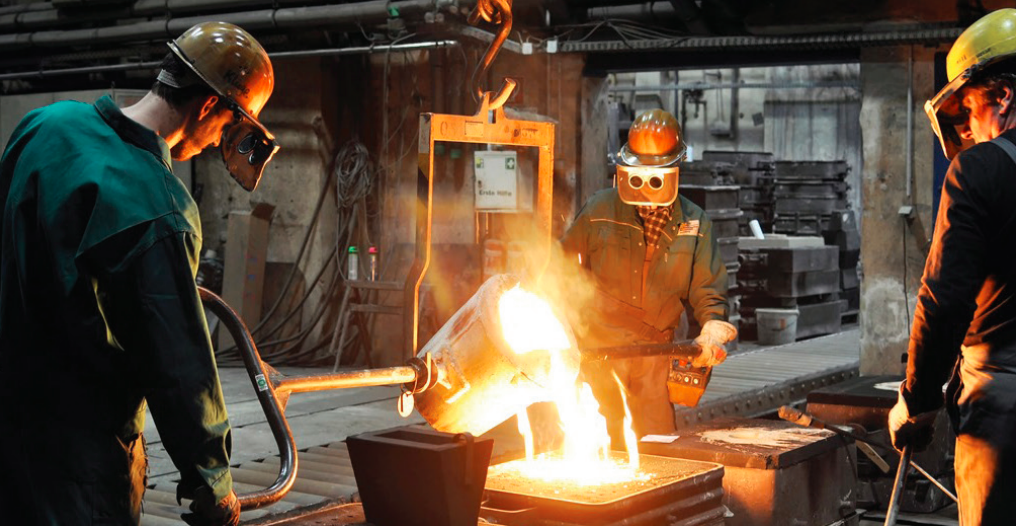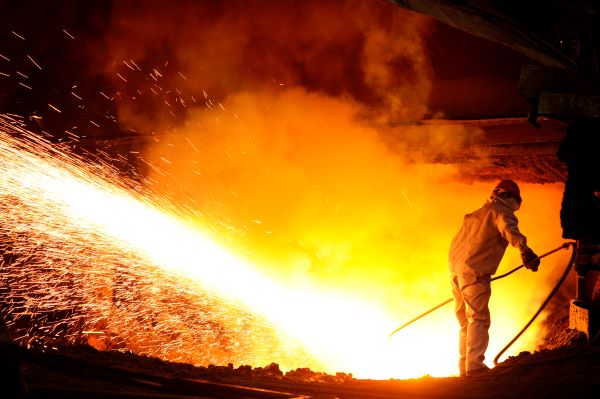Preventing Burns in High-Heat Work Environments
Working in high-heat environments often requires workers to handle extremely hot materials. Though companies do their best to implement engineering and administrative controls to eliminate or reduce the risks of injury, they must invest in the proper high-heat PPE (such as heat-resistant gloves, sleeves, and apparel) along with other control measures to better protect against burns and heat stress.

Burn types
When human skin is exposed to hot objects or materials, there is serious risk of causing thermal (heat-based) burns. The three major types or categories of burns are identified as first-, second-, and third-degree burns, in order of severity.
First-degree burn
A first-degree burn is the least dangerous of the three, but still needs tending. Similar to a ‘sunburn,’ a first-degree burn affects the top layer of the skin (dermis) and can be identified by a reddening of the skin, feeling warm to the touch, and painfully sensitive to physical contact or pressure. It’s not a penetrating burn, meaning it doesn’t go below the outer layer of the skin, nor does a first-degree burn blister.
A first-degree burn is only considered ‘critical’ (requiring medical evaluation) when more than 75% of the total body surface has been affected. This can happen when spilling hot liquid over the skin or the heat penetrates the clothing and keeps the heat against the skin for a prolonged period. It will also require evaluation if both hands are burned or if the hot material impacts the genitalia area of the body.
Second-degree burn
 A second-degree burn penetrates through the outer dermal layer of skin into the dermis – the layer that generates live skin cells and also contains the sensory nerves. This burn is generally the most painful since it directly damages the sensory nerves. It also causes blistering in and around the visible burn area as it penetrates the live dermal layer of skin.
A second-degree burn penetrates through the outer dermal layer of skin into the dermis – the layer that generates live skin cells and also contains the sensory nerves. This burn is generally the most painful since it directly damages the sensory nerves. It also causes blistering in and around the visible burn area as it penetrates the live dermal layer of skin.
It’s the blistering that visually sets this burn apart from a first-degree burn. Blisters form from the cellular fluids and water that escape from the damaged cells. Blisters can “pop” open which increase the risk of infection. A second-degree burn is ‘critical’ when more than 25% of the person’s total skin surface is affected.
Consult this guide from the American Burn Association for first-aid treatment procedures for first- and second-degree burns.
Third-degree burn
A third-degree burn affects all the layers of the skin – the epidermis (outer layer), the dermis (inner layer), and the subcutaneous layer (insulation fat cells, bigger blood vessels, sweat glands, etc). Because it’s classified as a ‘full-thickness’ burn, it destroys the sensory nerves in the dermal layer so generates little to no pain, even though it causes the most damage.
A third-degree burn appears as charred, leathery, blackened skin with blisters (second-degree) and reddened skin (first-degree) encompassing it. The risk of infection into the open burn wound is high and requires immediate medical attention.

Burn prevention measures
Burn prevention in the workplace begins with an effective risk assessment of the tasks to be performed, along with assessing the general work area in high-heat environments. Findings may include direct incidental contact with hot materials, the need to handle or transport hot materials, and the splashing of molten metals, glass, or steam/boiling water.
During this assessment, evaluate the hierarchy of controls that can be put in place to eliminate or reduce risk exposure. After reviewing the engineering and administrative/procedural controls, the proper PPE must be obtained. Place emphasis on selecting the appropriate PPE followed by training on the PPE’s limitations. High-heat-resistant apparel and gloves work well, but there are limits as to how much protection PPE can provide.
Engineering controls/insulation measures
Consider engineering controls first when conducting your risk assessment. This consists of removing or designing hazards out of the process. For example, one can prevent or reduce contact with high-heat surfaces by providing insulating materials. Or maybe one can reduce direct exposure to a hazard entirely by installing infrared shields on furnace or kiln windows or using remote cameras to visually inspect furnace or caster processes.
Develop and implement effective administrative procedures
Procedures are developed in order to provide guidance and step-by-step actions that offer the greatest level of protection for employees. Procedures provide the “how” to safely address the “what”– performing the task. Training should also provide the “why,” so employees can understand that all risks have been evaluated and current procedures are the safest and most efficient way to perform the task.
Front-line employees that actually perform the tasks and work in the affected area should always participate in the procedure development in order to generate the safest results.

Heat-resistant gloves and apparel
Even PPE specifically designed to provide heat protection still comes with a variety of different options and capabilities, so it’s important to conduct a thorough risk assessment that identifies the type of glove needed for each task. For example, an aluminized glove may be the best option for radiant heat, but has less protection against contact heat than a full para-aramid glove.
Hands aren’t the only thing that needs heat protection, though. There are heat-resistant sleeves and apparel and aluminized hoods, as well. For ultra-violet (UV) and infrared (IR) burn protection, whether working around a furnace, kiln, caster, or even welding, consider fire-retardant greens and welding gloves and apparel instead.
Safe employee practices
The best engineering and administrative protective measures won’t work if employees aren’t trained to follow safe work practices when working in a high-heat environment.
Safety is a team effort, and this should be drummed home at every opportunity. Employees are expected to help each other stay safe by following best practices and looking out for one another. Developing teamwork significantly improves workplace safety and reduces injury exposure.
Accountability is an important part of working safely. This doesn’t have to be punitive. It could involve recognizing those who are performing safely and taking responsibility. For those who need more than encouragement and recognition, accountability may also involve discipline and corrective action.
Remember, it’s not just front-line employees who are accountable for safety. Managers must hold supervisors accountable for their performance and how effective they are in getting teams to comply. A safety performance indicator must be part of all employees’ performance evaluation, regardless of level within the organization. Everyone must know safety is a value along with quality and meeting production goals.
Lastly, there should be a mechanism in place for employees to offer suggestions for improvement. Employees should have the authority to address hazards the moment they’re identified, rather than leaving those hazards to fester until an injury occurs.
How Mechanix Wear can help
Stated earlier, the entire process must begin with an effective risk assessment so you can know what controls need to be in place. Mechanix Wear, through its TRACK program, will partner with any organization who requests assistance by conducting a free on-site risk assessment. Our experienced safety experts will provide recommendations and no-cost trial offerings for the appropriate PPE that matches the identified hazard(s). This program will save you time, money, and frustration while engaging your front-line employees in testing the PPE they will be required to wear.
Simply complete the form and start your journey with PPE professionals that can help with your safety program!